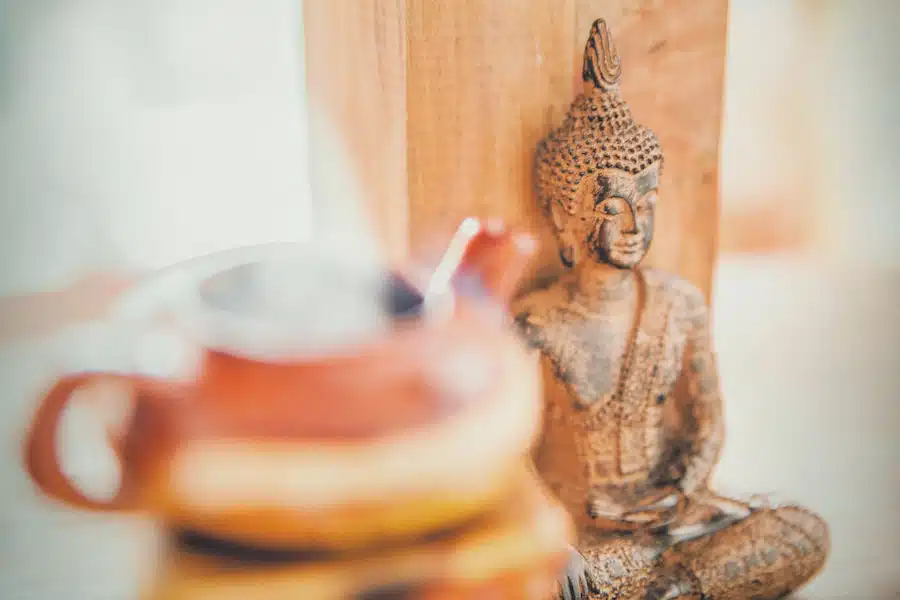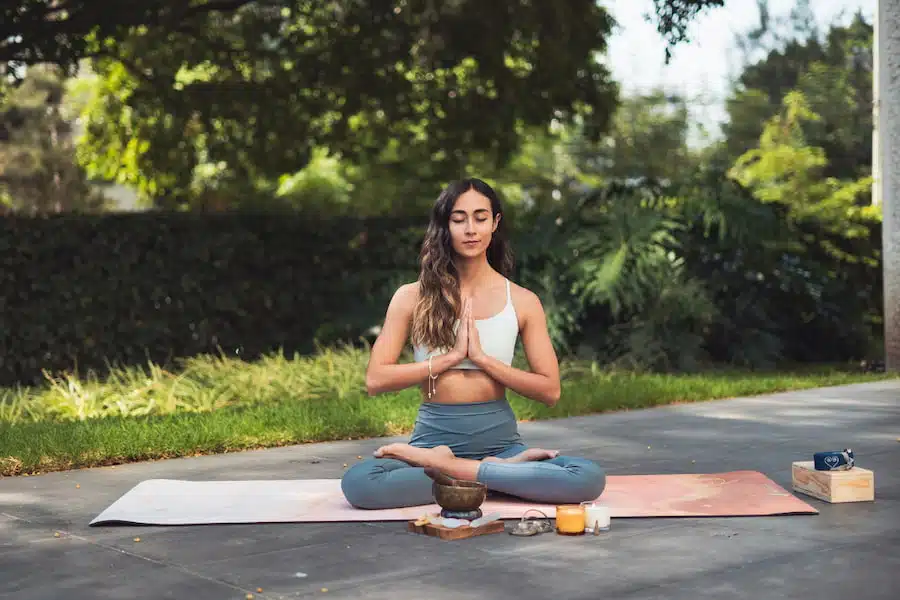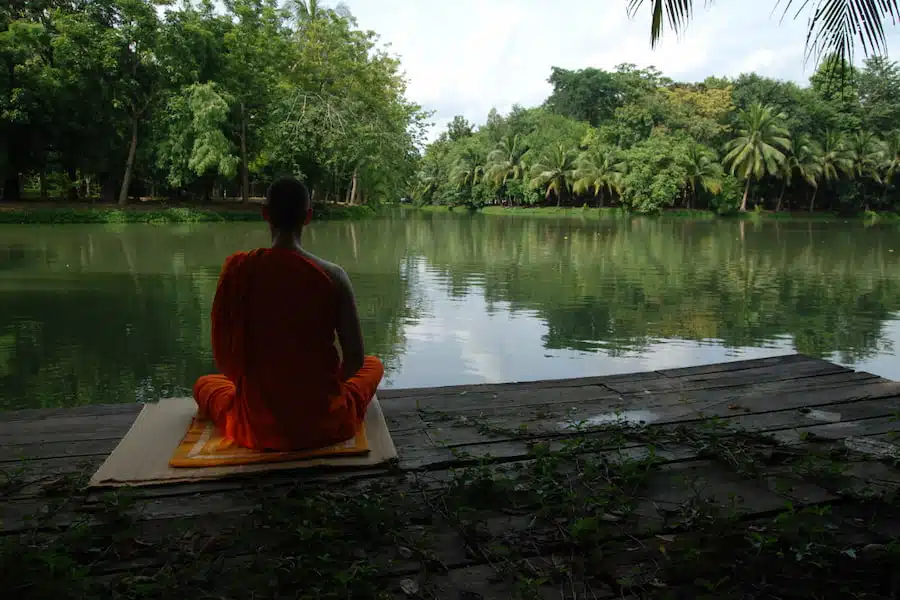It can feel complicated to find enlightenment—or just quiet your mind—with all the distractions of the modern day. However, delving into ancient meditation may reveal simple wisdoms that elevate your life and make your body and soul feel more connected than ever. Plus, meditation techniques can easily be paired with other holistic health practices you’re already taking part in.
Curious about the connection between kratom and meditation? Continue reading to discover where these anciently-rooted practices intersect, and how to customize your meditation journey to your personal needs.

Meditation may hold the keys to simplicity and self-awareness.
Many people long for a simpler time, and experts suggest going back further than a few decades to find inspiration. Ancient wisdom, including practices like meditation, may hold the keys to simplicity and self-awareness. According to the Cambridge Dictionary, the words “ancient” and “wisdom” are often used together to denote a way of living that has stood the test of time, and a type of knowledge and experience that can help influence future decisions for the better.
With the current culture encouraging people to move faster and be more productive, ancient wisdom matters now more than ever. It reminds individuals that there is value in slowing down and taking stock of where you are at (mind, body, and soul). Input from ancient wisdom helps move behavior patterns in a positive direction, and reminds people that slowing down may actually be more productive in the long-run.
Meditation is one such form of ancient wisdom that has lasted into the new millennium. While the earliest written records of meditation are considered to be the Hindu Vedas (an ancient text originating in India), which dates back to 1500 BCE, it wasn’t long before these techniques traveled to the Southeast Asian regions where Buddhism and Hinduism were—and still are— practiced.
Some experts even suggest that, hundreds of thousands of years ago, hunter-gatherer ancestors had their own form of meditation that involved gathering around the campfire and coping with the stresses of the day. So, it’s hard to say how old the practice of meditation really is. Needless to say, it’s been around a long time while still remaining relevant to the problems of today.
Around the 19th century, Western cultures started to take interest in Eastern ways of living and philosophy. As methods of communication and travel expanded during the 20th century, so did information about meditation. It became increasingly popular in Western cultures, especially as Dr. Jon Kabat-Zinn brought mindfulness-based stress reduction practices to the public.
While some would argue that meditation becoming mainstream resulted in a more adulterated version of this ancient practice, going global has had its advantages. For one, science has started to confirm what early Eastern wisdom has known all along— that meditation has profound effects on the mind and body. Meditation has implications for many aspects that affect quality of life and the ability to be present in an experience.
Recent research links this ancient practice with the following benefits for modern-day living (just to name a few):
Today, meditation has a wider connotation, acting as sort of an umbrella term to describe several different types of practices from distinct cultures. It’s also commonly linked with other methods that bring awareness top of mind, like yoga.

We hope to equip present-day people with the tools they need to make kratom and mindful living aspects of everyday life.
Experts like Wade Davis, author of The Wayfinders: Why Ancient Wisdom Matters in the Modern World, suggest ancient wisdom (a vital part of the human legacy) is at risk. He also offers a solution—that we rediscover ancient wisdom, appreciate it, and integrate it into modern life in innovative ways. “Saving the planet means listening to indigenous peoples,” says Davis.
Golden Monk is on a mission to honor ancient wisdom, including the ancient practices of Southeastern Asian cultures (like kratom), while also revolutionizing the way kratom is thought about and used to benefit people today. In addition to highlighting kratom’s history in ancient socio-religious ceremonies and healing patterns, we hope to equip present-day people with the tools they need to make kratom and mindful living aspects of everyday life.
For most people, it’s not realistic to travel to Eastern regions and learn from the masters, but that doesn’t mean you need to abandon the idea of meditation altogether! Even as a novice, you can experience the benefits of being a little more enlightened than you were before.
If phrases like “ritual” (often used in ancient text) feel foreign to you, try thinking of meditation as a habit, instead. In fact, some sources refer to meditation as a sort of “spiritual hygiene.” Just like brushing your teeth is an everyday yet crucial practice to maintain health, this mindset shift can help make meditation feel like a normal part of your soul-care without removing its importance. More than a religious or spiritual practice, meditation has reached the secular circle, meaning you can participate on the level that feels appropriate for you personally, even if you aren’t a self-described “spiritual person.”
Another helpful reminder is that there are different forms of meditation. Although sitting cross-legged is a popular depiction, meditation can occur in any number of postures (from laying down to walking to washing dishes). There are also different types of meditations, such as guided and visual-based, so you can explore until you find what’s right for you. With a plethora of available apps to choose from, it can be beneficial to start with a free version like Healthy Minds, which is beginner-friendly and teaches the basics for a good foundation.
Remember, meditation is more than just deep breathing. Meditation may actually be rewiring your brain at a deeper, cellular level, creating healthier neural networks that can help you reach new heights in your health.
Although records of meditation and kratom being used together aren’t evident in older texts, we do know that both have been used and practiced anciently. Much like meditation, it’s widely believed that Southeastern Asian cultures have been using kratom for millennia to connect more deeply with their inner self and its innate wisdom. Today, kratom continues to be connected to personal growth and overall well-being.
If you’re interested in incorporating kratom into your meditation practice, there are many ways to do so. Larger serving sizes of kratom may help you to reach a more restful state, while smaller sizes may help enhance your focus on the breath (a crucial part of most meditative practices) or reciting mantras. Looking for the best of both worlds? Consider your choice of kratom strain, in addition to experimenting with your serving size. Most green vein kratom strains strike a good balance if you’re looking to combine elements of both calming and insight-driven meditation styles.
Overall, kratom may be able to elevate your state of mindfulness and the awareness of your inner self during meditation. As Aristotle said, “Knowing yourself is the beginning of all wisdom.”

Much like meditation, it’s widely believed that Southeastern Asian cultures have been using kratom for millennia to connect more deeply with their inner self and its innate wisdom.
Although lifestyle gurus claim to have the secrets to success, the real wisdom may lie in ancient practices like meditation. Incorporating kratom into your routine may help you maintain a sort of “spiritual hygiene” and awareness of inner self that can help elevate your health. Similar to how you can suit meditation to your personal style, you can tailor your kratom strain and serving size to meet your meditation needs.
Motivated to begin meditation? Check out some of our favorite guides below, and look into kratom’s benefits and effects to find a personal sense of balance.
Cinosi E, Martinotti G, Simonato P, Singh D, Demetrovics Z, et al. Following “the Roots” of Kratom (Mitragyna speciosa): The Evolution of an Enhancer from a Traditional Use to Increase Work and Productivity in Southeast Asia to a Recreational Psychoactive Drug in Western Countries. Biomed Res Int. 2015;2015:968786.
Cleveland Clinic. Meditation. My.clevelandclinic.org. Published May 2022.
Lauricella S. The Ancient-Turned-New Concept of “Spiritual Hygiene”: An Investigation of Media Coverage of Meditation from 1979 to 2014. J Relig Health. 2016;55:1748-1762
Mindworks Team. A Brief History of Mediation. Mindworks.org. Accessed February 2024.
Nash J. The History of Meditation: Its Origins & Timeline. Positivepsychology.com. Published May 2019.
Ross A. How Meditation Went Mainstream. Time.com. Published March 2016.
Sharma H. Meditation: Process and effects. Ayu. 2015;36(3):233-237.
Swogger MT, Walsh Z. Kratom use and mental health: A systematic review. Drug Alcohol Depend. 2018;183:134-140.
Sumantry D, Stewart KE. Meditation, Mindfulness, and Attention: a Meta-analysis. Mindfulness. 2021;12:1332-1349.
Your Headspace Mindfulness & Meditation Experts. Types of meditation. Headspace.com. Accessed February 2024.